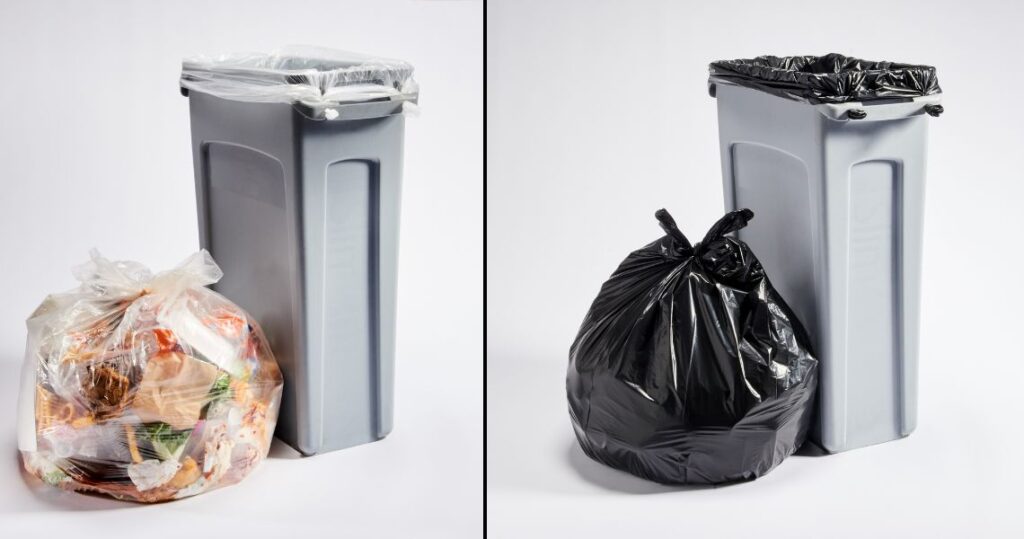As a food service operator, choosing the right, can liner for your business is more critical than you think. Not only do you want a liner that can handle the amount of waste your operation produces, but you also want to ensure that it won’t leak or tear easily. With so many different types of can liners available, it can be challenging to determine which one is the best fit and most cost-effective for your operation’s needs.
Identify Opportunities
Before choosing a can liner, it is important to assess what you have currently and if any issues need to be addressed. Are there excessive containers in an area? Or too many different container types? Are there ill-fitting can liners – either too short, too wide, too long, or too thin? Are the staff double-bagging liners? Answering these questions will help you identify the right liner, use less plastic, save money, and reduce labor costs.
Choosing the Correct Resin
What type of waste is going into the bag? Sharp objects? Heavy materials? A heavy-duty liner can handle sharp objects or heavy loads. Look for Linear Low-Density Polyethylene (LLDPE) or LLDPE with Super Hexene Blend. If you determine you need a dependable liner for non-sharp, heavy, or wet trash, look for High-Density Polyethylene (HDPE) liners. If versatility in handling average to moderately heavy loads is what you need, Linear Low-Density Polyethylene should be your choice. Finally, if you are looking for a liner made with reprocessed resin, choose the Reprocessed Linear Low-Density Polyethylene bags.
Size Considerations
Choosing the right size can liner is one of the most important decisions when it comes to saving money and reducing plastic usage. Measure your container using these formulas to determine the proper fit.
Linear Width: Use one-half of the outer circumference of the container.
Linear Length: Use the height of the container plus one-half the diameter of the container plus three inches (for overhang). For square or rectangular containers, use the diagonal or the container bottom.
The Right Gauge
The question here is how is waste transported to the dumpster. This is important to determine bag thickness. If the receptacle is taken directly to the dumpster and then emptied, a thinner bag may be acceptable. If the bag is removed from the receptacle and then carried to the dumpster, a thicker can liner may be needed.
Color
While the color of your can liner may seem like a minor consideration, it can be an essential factor in maintaining the cleanliness and appearance of your operation. Black can liners are the most common and the most economical, but they can make it difficult to see the contents of the trash, which can lead to overfilling or the disposal of hazardous materials. Clear can liners are a good choice if you want to be able to see the contents of your trash and identify potential problems before they become bigger issues. However, clear liners may not be the best choice if you have a lot of food waste, as they can be unappetizing to customers. Other considerations would include segregating recycling from landfill waste and whether there are government regulations regarding waste disposal.




























